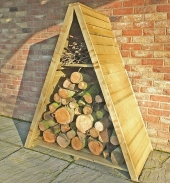
 4
4












Jami McBride wrote:I love your idea Dale, I have gone the other route and purchased 3-way and 4-way metal fittings (on-line) to make my own simple A-frame structures (smaller, but similar to what one can buy from Costco).
My Problem with my temp-tarp buildings is: (1) firmly connecting the leg pipes to the fittings. I use self tapping screws, but these can loosen with movement (and I move mine a lot).
I imagine I should be drilling wholes and running bolts all the way through the whole leg+fitting, but that is a bit over my construction comfort level. Any thoughts on this..... ?
I would be interested in learning how to build my own scaffolding. I imagine it would cost plenty, even second-hand, as it's normal clientele is in the construction business.
I'm going to go look for some on Craigslist and see what I can find.
Thanks for the great idea - Scaffolding So Many Applications!



















'Theoretically this level of creeping Orwellian dynamics should ramp up our awareness, but what happens instead is that each alert becomes less and less effective because we're incredibly stupid.' - Jerry Holkins
 3
3












 and now we've long since moved away from that homestead. Finding the tarp was a lucky score, but I've made temporary storages for things like firewood from common plastic sheeting (which can be had for free from mattress and furniture store dumpsters....all that stuff comes in huge plastic bags, which can be cut open to flat pieces and if desired, "candle-welded" together into larger pieces. These are tied down first, overlapping, and then covered with a layer of any kind of fabric.....again, look for this in places like goodwill dumpsters. The fabric protects the plastic from the sun and such a combination tarp can last several years.....
and now we've long since moved away from that homestead. Finding the tarp was a lucky score, but I've made temporary storages for things like firewood from common plastic sheeting (which can be had for free from mattress and furniture store dumpsters....all that stuff comes in huge plastic bags, which can be cut open to flat pieces and if desired, "candle-welded" together into larger pieces. These are tied down first, overlapping, and then covered with a layer of any kind of fabric.....again, look for this in places like goodwill dumpsters. The fabric protects the plastic from the sun and such a combination tarp can last several years.....



 I don't want to compost these, and my dump just started charging high prices for all dumping.
I don't want to compost these, and my dump just started charging high prices for all dumping.  1
1




















'Theoretically this level of creeping Orwellian dynamics should ramp up our awareness, but what happens instead is that each alert becomes less and less effective because we're incredibly stupid.' - Jerry Holkins





|
Get meta with me! What pursues us is our own obsessions! But not this tiny ad:
Learn Permaculture through a little hard work
https://wheaton-labs.com/bootcamp
|





